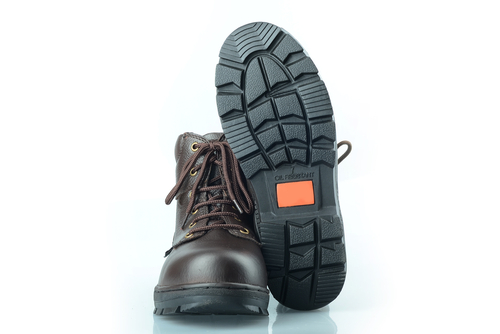Friction is a force that impacts us in a wide range of different ways. Without friction, we wouldn't be able to walk the way we do because our feet wouldn't grip to the ground!

Friction helps us in a lot of ways but can also cause problems. For example, friction between the components of a machine can lead to wasted heat energy, making our technology less efficient.
Understanding friction is important as it is so impactful in our day-to-day lives. One way we can understand the force of friction better is through experiment work. In this activity, we will learn about one technique we can use to investigate friction, and how we can analyse and use those results.
In this investigation, we will be reviewing different surface types, to see how they affect the friction when an object is dragged across them at a constant speed. The image below shows how we could carry this out in a lab.
In this investigation, we will use a 5 kg mass, a newton meter, and different surfaces to drag our mass across. For surfaces, we will use carpet, wood, plastic, and ice.
How can we make this investigation a fair test?

In a fair test, only one variable affects the outcome. So, for this experiment, that means that only the surface can affect the amount of friction measured.
To make this a fair test, we need to decide on some control variables.
A control variable is something in an experiment that we keep constant, to make it a fair test.
In this experiment, the control variables are -
1. Using the same block with the same mass each time
2. Pulling the block with the same, constant speed each time
3. Pulling the block across the material horizontally
4. Keeping the surface at the same angle each time
As an example, if we pulled a block with a different mass across a surface, then it is likely that both the mass of the block and the type of surface will affect the friction, not just the surface. That would mean that we couldn't make any valid conclusions from the experiment. For an experiment to be valid, it needs to come from a fair test.
Here are our results -
| Surface Type | Friction (N) |
|---|---|
| Carpet | 32 |
| Wood | 25 |
| Plastic | 22 |
| Ice | 14 |
A valid conclusion from this experiment could be:
"The type of surface does have an effect on the friction measured dragging the block. The surface causing the greatest friction was the carpet, and the surface causing the least friction was the ice."
Now that we have reviewed an example of a friction experiment, let's try some questions to check our understanding!










